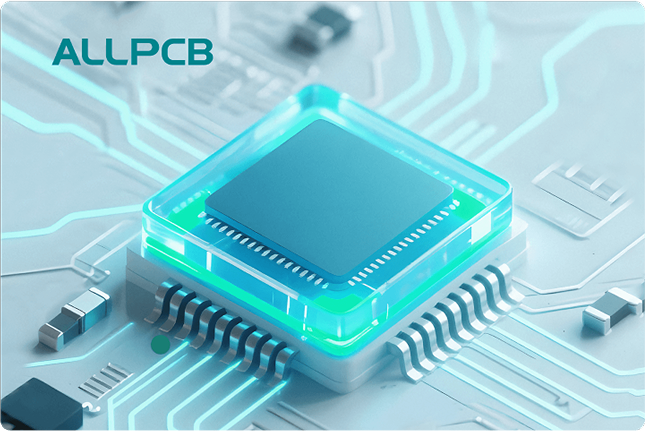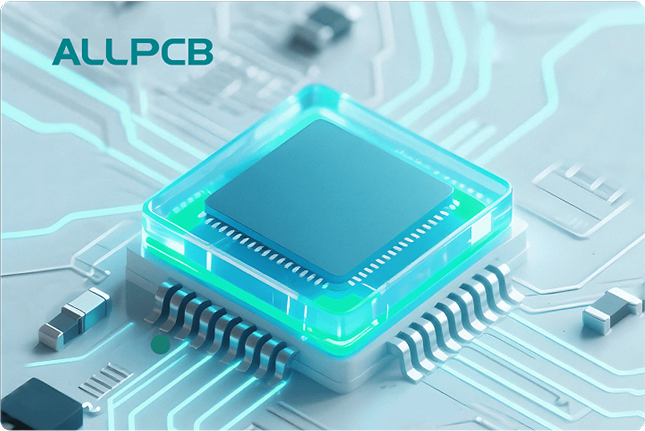Conformal coating inspection is a critical step in ensuring the reliability and longevity of printed circuit boards (PCBs). Whether you're protecting electronics from moisture, dust, or extreme temperatures, inspecting the coating for proper application and coverage is essential. In this comprehensive guide, we’ll explore key techniques like conformal coating UV inspection, visual inspection, and automated inspection, while also diving into quality control methods to maintain high standards. Let’s break down how these processes work and why they matter for your projects.
What Is Conformal Coating and Why Inspect It?
Conformal coating is a thin protective layer applied to PCBs to shield them from environmental factors such as humidity, chemicals, and thermal stress. Common materials include acrylic, silicone, polyurethane, and Parylene, each offering unique protective qualities. However, even the best coating materials can fail if not applied correctly. Issues like uneven thickness, bubbles, cracks, or incomplete coverage can compromise the PCB's performance, leading to failures in critical applications like automotive or aerospace electronics.
Inspection ensures that the coating meets strict quality standards, adheres to specifications, and provides the intended protection. By using techniques like conformal coating visual inspection, UV inspection, and automated systems, manufacturers can catch defects early, saving time and costs while maintaining reliability.
Key Conformal Coating Inspection Techniques
Inspecting conformal coatings involves a variety of methods, each with its strengths and limitations. Below, we’ll explore the most common techniques used in the industry to ensure quality and coverage.
1. Conformal Coating Visual Inspection
Visual inspection is the most basic and widely used method for checking conformal coatings. Trained inspectors examine the PCB under magnification to identify defects such as uneven coating, voids, or areas of incomplete coverage. This technique often uses white light or angled lighting to highlight issues like ripples, fisheyes (small circular defects), or orange peel textures (rough, uneven surfaces).
Advantages: It’s a simple, low-cost method that doesn’t require advanced equipment. It’s ideal for spotting obvious defects quickly.
Limitations: Results can be subjective, as they depend on the inspector’s experience and attention to detail. Fine defects or issues in hard-to-see areas may go unnoticed.
Best Practice: Use standardized lighting conditions and magnification tools (e.g., 10x to 20x magnification) to improve accuracy. Following industry standards like IPC-A-610 can help define acceptance criteria for visual defects.
2. Conformal Coating UV Inspection
Many conformal coatings contain fluorescent additives that glow under ultraviolet (UV) light, making it easier to detect coverage issues. During conformal coating UV inspection, a blacklight or UV lamp is used to illuminate the PCB, revealing areas where the coating is missing or too thin. This method is especially useful for identifying gaps in shadowed or hard-to-reach areas of the board.
Advantages: UV inspection is fast and effective for checking overall coverage. It can highlight defects that are invisible to the naked eye during visual inspection.
Limitations: Not all coatings have fluorescent properties, so this method isn’t universal. Additionally, it may not detect issues like coating thickness or internal bubbles.
Best Practice: Combine UV inspection with other methods for a more comprehensive analysis. Ensure the UV lamp used operates at the correct wavelength (typically 365 nm) for optimal fluorescence.
3. Conformal Coating Automated Inspection
Automated optical inspection (AOI) systems are increasingly popular for conformal coating quality control, especially in high-volume production environments. These systems use high-resolution cameras and advanced software algorithms to scan coated PCBs for defects. They can detect issues like insufficient coating thickness, voids, or inconsistencies with precision and speed.
Advantages: AOI systems offer high accuracy and repeatability, reducing human error. They can process large batches quickly, making them ideal for mass production.
Limitations: The initial cost of AOI equipment can be high, and setup requires technical expertise. These systems may also struggle with complex board geometries or non-standard coatings.
Best Practice: Use AOI systems for critical applications where consistency is paramount. Regularly calibrate the equipment and update software to ensure accurate detection of defects.
4. Thickness Measurement Techniques
Coating thickness is a critical parameter that directly affects protection levels. Industry standards often specify acceptable thickness ranges, such as 25–50 micrometers (μm) for liquid coatings or 10–20 μm for Parylene. Several methods are used to measure thickness during conformal coating inspection:
- Eddy-Current Gauges: These non-destructive tools measure thickness by detecting changes in electromagnetic fields. They’re accurate for conductive substrates.
- Optical Interference Meters: These devices use light interference to measure coating thickness with high precision, suitable for non-conductive surfaces.
- Destructive Cut-Back Methods: Involves cutting through the coating to measure its depth under a microscope. While accurate, it damages the sample and isn’t suitable for all assemblies.
Advantages: These methods provide quantitative data, supporting process control and traceability.
Limitations: Some techniques are expensive or time-consuming, and destructive methods can’t be used on finished products.
Best Practice: Select a measurement method based on the coating type and project requirements. Non-destructive methods are preferred for ongoing quality control.
Conformal Coating Quality Control: Best Practices
Beyond inspection techniques, effective conformal coating quality control involves a holistic approach to the entire coating process. Here are some best practices to ensure consistent results:
1. Adherence to Industry Standards
Standards like IPC-A-610 and IPC-CC-830 provide detailed guidelines for conformal coating application and acceptance criteria. These standards define acceptable levels of defects, thickness ranges, and coverage requirements. Following them ensures that your coatings meet global benchmarks for quality and reliability.
Tip: Document inspection results as part of batch quality records to demonstrate compliance during audits or customer reviews.
2. Process Monitoring and Control
Quality control starts with the application process. Monitor variables like coating viscosity, application pressure, and curing conditions (e.g., temperature and time). For example, thermal curing for epoxy coatings often requires ovens set between 80–120°C for 30–60 minutes, depending on the material. Deviations can lead to issues like pooling or incomplete polymerization.
Tip: Use automated dispensing systems for precise application and reduce variability in manual processes.
3. Training and Certification
Operators and inspectors should be trained in conformal coating techniques and relevant standards. Certification programs, such as those offered by IPC, ensure that staff have the skills to identify defects and maintain quality.
Tip: Conduct regular refresher courses to keep skills up to date with evolving industry practices.
4. Defect Mitigation and Rework
Even with strict controls, defects can occur. Common issues include bubbles (caused by trapped air during application) or delamination (coating peeling off due to poor adhesion). Identify the root cause of defects through inspection data and adjust processes accordingly. For rework, use appropriate removal methods like chemical stripping or micro-abrasion, ensuring the PCB isn’t damaged.
Tip: Maintain a log of defects and corrective actions to track patterns and improve processes over time.
Choosing the Right Inspection Technique for Your Needs
Selecting the best conformal coating inspection method depends on several factors, including production volume, budget, and application requirements. Here’s a quick guide to help you decide:
- Small-Scale or Prototype Production: Rely on conformal coating visual inspection and UV inspection for cost-effective checks. These methods are sufficient for low-volume runs or initial testing.
- High-Volume Manufacturing: Invest in conformal coating automated inspection systems like AOI to handle large batches with consistent accuracy.
- Critical Applications: Combine multiple techniques, such as UV inspection for coverage and thickness measurement for precise data, to meet stringent reliability standards.
Regardless of the method, integrate inspection into every stage of production—from pre-coating preparation to post-curing checks—to catch issues early.
Common Challenges in Conformal Coating Inspection
Despite best efforts, challenges can arise during inspection. Here are some common issues and how to address them:
- Complex Board Geometries: Shadowed areas or dense components can hide defects. Use UV inspection or AOI systems with 3D imaging capabilities to overcome this.
- Subjectivity in Visual Checks: Standardize inspection criteria and train staff to minimize variability in results.
- Cost Constraints: Balance budget with quality needs by prioritizing non-destructive methods and scalable solutions like modular AOI systems.
The Importance of Quality Control in Conformal Coating
Conformal coating quality control isn’t just about meeting standards—it’s about ensuring the end product performs as expected in real-world conditions. For example, in automotive electronics, a poorly coated PCB exposed to temperature swings of -40°C to 85°C could fail due to moisture ingress, leading to costly recalls. Thorough inspection and control processes prevent such failures, protecting both the manufacturer and the end user.
Conclusion: Building Reliability with Conformal Coating Inspection
Conformal coating inspection is a cornerstone of PCB manufacturing, ensuring that protective layers provide the durability and performance needed for demanding applications. Techniques like conformal coating visual inspection, UV inspection, and automated inspection each play a vital role in detecting defects and maintaining quality. By combining these methods with robust conformal coating quality control practices, manufacturers can achieve consistent results and build trust in their products.
Whether you’re working on small prototypes or large-scale production, prioritizing inspection at every step is key. With the right tools, training, and adherence to standards, you can safeguard your electronics against environmental challenges and deliver reliable solutions to your customers.
 ALLPCB
ALLPCB







